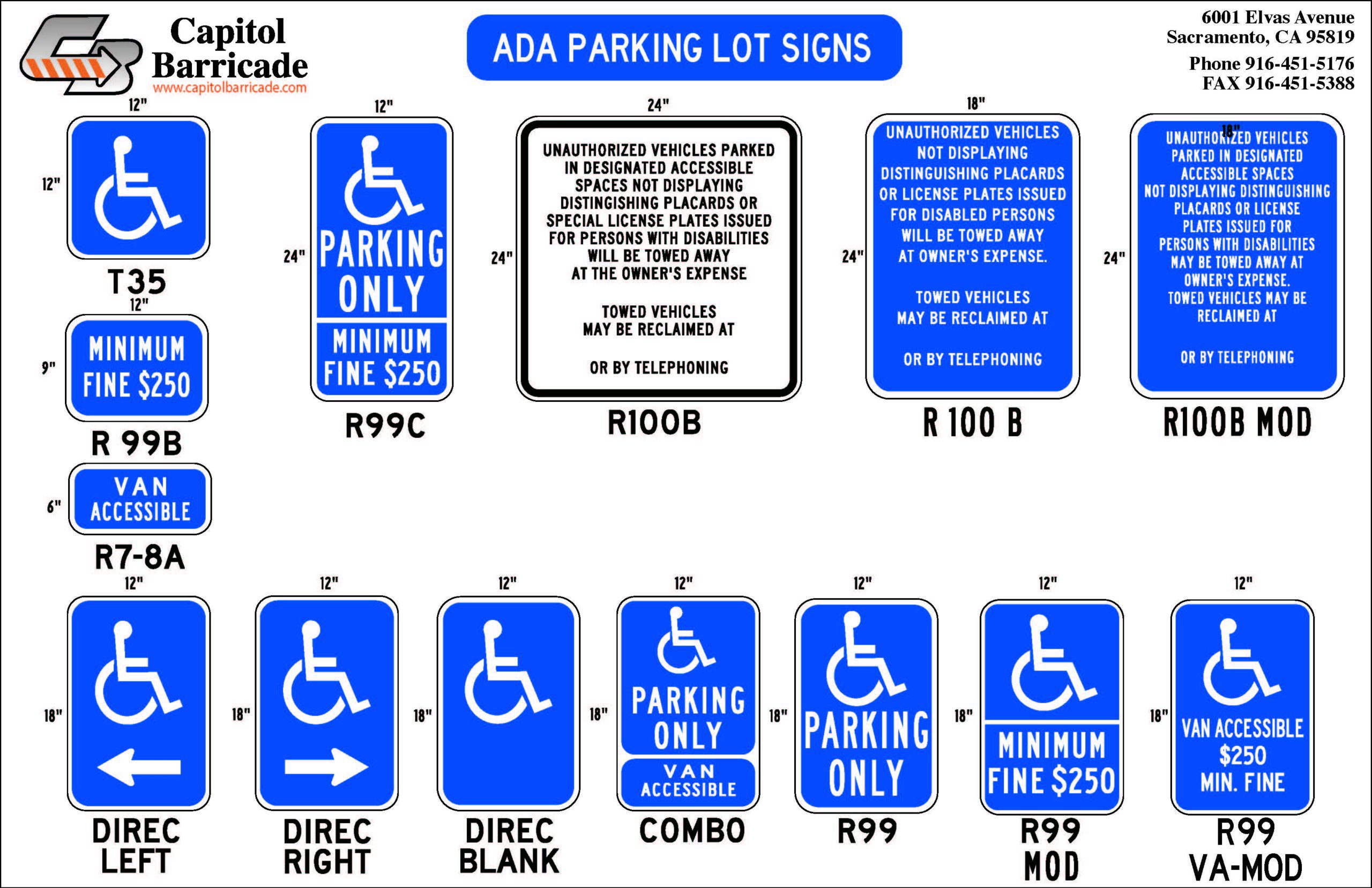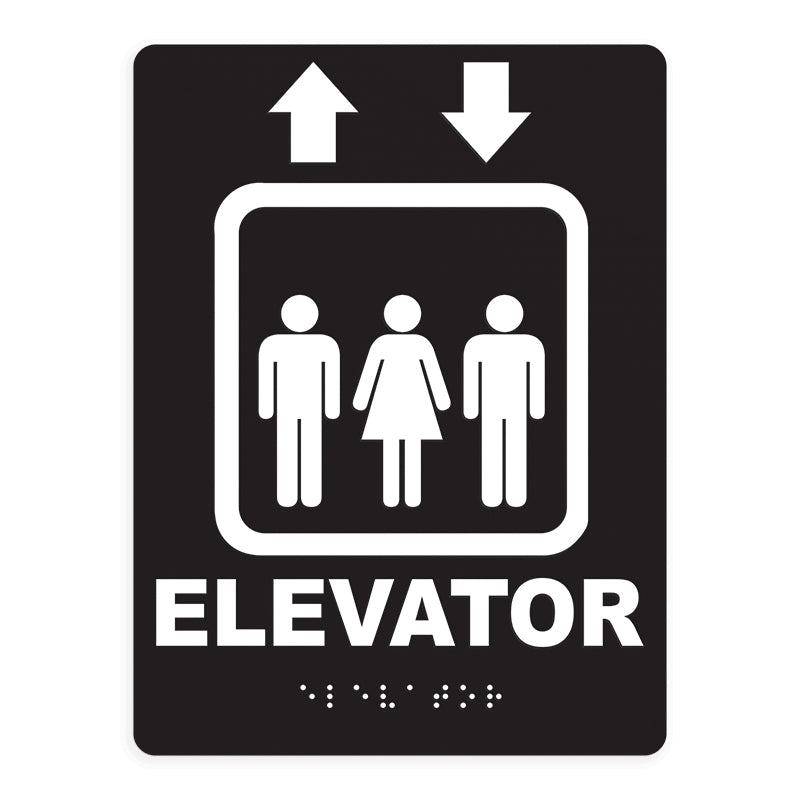Understanding the Rules Behind ADA Signs
Understanding the Rules Behind ADA Signs
Blog Article
Exploring the Key Functions of ADA Indicators for Boosted Ease Of Access
In the world of ease of access, ADA indicators offer as quiet yet powerful allies, making sure that rooms are inclusive and accessible for individuals with handicaps. By incorporating Braille and tactile aspects, these signs damage obstacles for the visually damaged, while high-contrast shade schemes and legible typefaces cater to varied visual needs.
Importance of ADA Compliance
Guaranteeing conformity with the Americans with Disabilities Act (ADA) is crucial for fostering inclusivity and equal access in public spaces and offices. The ADA, enacted in 1990, mandates that all public centers, companies, and transportation services suit individuals with handicaps, ensuring they take pleasure in the same rights and opportunities as others. Compliance with ADA requirements not only fulfills legal responsibilities however likewise improves a company's track record by showing its commitment to diversity and inclusivity.
One of the key aspects of ADA conformity is the execution of available signs. ADA indications are designed to ensure that individuals with impairments can quickly navigate via buildings and areas.
Furthermore, sticking to ADA regulations can reduce the risk of prospective penalties and lawful consequences. Organizations that fail to abide with ADA standards might encounter penalties or claims, which can be both monetarily challenging and harmful to their public image. Thus, ADA compliance is important to promoting an equitable environment for everyone.
Braille and Tactile Components
The unification of Braille and responsive elements right into ADA signs embodies the concepts of ease of access and inclusivity. It is generally put under the corresponding message on signs to make certain that people can access the information without aesthetic support.
Responsive components extend past Braille and consist of increased icons and characters. These parts are designed to be discernible by touch, permitting individuals to determine room numbers, bathrooms, departures, and other vital areas. The ADA establishes details standards pertaining to the dimension, spacing, and positioning of these responsive aspects to enhance readability and make sure uniformity throughout different environments.

High-Contrast Color Design
High-contrast color design play a crucial function in enhancing the exposure and readability of ADA signage for people with visual problems. These schemes are crucial as they make best use of the distinction in light reflectance in between text and history, guaranteeing that signs are quickly discernible, even from a range. The Americans with Disabilities Act (ADA) mandates the use of details color contrasts to suit those with limited vision, making it a critical aspect of conformity.
The efficacy of high-contrast colors exists in their ability to stick out in numerous illumination problems, consisting of dimly lit atmospheres and locations with web link glare. Normally, dark text on a light background or light message on a dark history is employed to accomplish optimum comparison. Black text on a yellow or white background offers a plain aesthetic distinction that aids in quick recognition and comprehension.

Legible Fonts and Text Size
When taking into consideration the layout of ADA signs, the option of legible fonts and ideal message size can not be overstated. The Americans with Disabilities Act (ADA) mandates that fonts must be sans-serif and not italic, oblique, script, very ornamental, or of uncommon kind.
According to ADA guidelines, the minimal text elevation should be 5/8 inch, and it needs to enhance proportionally with watching distance. Uniformity in text dimension contributes to a cohesive aesthetic experience, helping people in navigating settings efficiently.
In addition, spacing between lines and letters is essential to readability. Sufficient spacing protects against characters from showing up crowded, boosting readability. By adhering to these criteria, developers can substantially boost ease of access, making certain that signage serves its desired purpose for all individuals, no matter their aesthetic capabilities.
Efficient Positioning Strategies
Strategic placement of ADA signage is vital for making best use of ease of access and making sure conformity with legal criteria. ADA standards state that signs need to be mounted at a height between 48 to 60 inches from the ground to ensure they are within the line of sight for both standing and seated individuals.
In addition, indicators must be placed surrounding to the lock side of doors to permit easy identification prior to entrance. This positioning aids people find spaces and areas without obstruction. In cases where there is no door, indications need to this post be situated on the nearest nearby wall. Consistency in indication positioning throughout a facility improves predictability, decreasing complication and improving total customer experience.

Conclusion
ADA indications play a vital function in advertising accessibility by incorporating functions that resolve the demands of individuals with specials needs. Incorporating Braille and responsive elements makes sure vital info comes to the aesthetically impaired, while high-contrast shade plans and understandable sans-serif fonts click here to find out more boost visibility across numerous lighting conditions. Reliable placement approaches, such as appropriate mounting elevations and strategic locations, additionally promote navigating. These components jointly promote an inclusive atmosphere, underscoring the relevance of ADA compliance in making sure equal accessibility for all.
In the world of availability, ADA indications serve as quiet yet powerful allies, making sure that rooms are comprehensive and accessible for individuals with disabilities. The ADA, passed in 1990, mandates that all public centers, employers, and transportation services fit people with specials needs, ensuring they appreciate the very same civil liberties and chances as others. ADA Signs. ADA indications are designed to ensure that people with handicaps can conveniently navigate through rooms and buildings. ADA standards specify that indications ought to be placed at a height between 48 to 60 inches from the ground to guarantee they are within the line of sight for both standing and seated people.ADA indicators play a vital function in advertising ease of access by incorporating features that deal with the demands of individuals with specials needs
Report this page